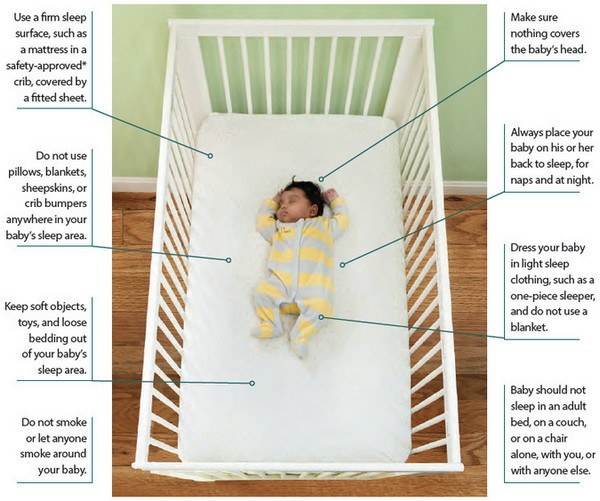The following was written by Trecia Ehrlich for Public Health Insider:
Every year in the United States, about 3500 infants die unexpectedly in their sleep. We’re hoping respectful conversations and cardboard boxes will help reduce the incidence of these tragedies in King County.
To find out more about this initiative (and why cardboard boxes are part of the package), Public Health Insider talked to Rebecca Benson from our Nurse Family Partnership and Early Intervention Project. As Program Lead she is responsible for working with Public Health Nurses (PHNs) who visit new moms and their babies during the baby’s first year of life. PHNs educate families on how to provide safe and secure sleep environments for their babies. If the family does not have a safe sleeping space for their babies, the PHN will provide a crib or a baby box to ensure that the baby is as safe as possible.
Public Health Insider: First thing’s first – what is the deal with the boxes?
The cardboard boxes aren’t just boxes – they’re baby bed boxes (from the Baby Bed Box Co.), designed to give babies a safe place to sleep. Inspired by Finland’s success in reducing infant mortality rates, we hope to address one of the many factors that contribute to sudden unexpected infant deaths: unsafe sleep environments.
But this project didn’t start with boxes. After a series of infant deaths, our Child Death Review Committee found that healthcare providers weren’t consistently providing information about safe sleep to their patients. From there, a group of experts – including physicians, our medical examiner, and public health experts – developed conversation starters that all health care providers could use with parents and caregivers to help address infant sleep in a respectful way. Our hope is that when and if a parent lacks a safe sleep environment, the baby bed box will also be a good solution.
Our first 118 boxes have been purchased with dollars from King County’s unique Equity and Social JusticeOpportunity Fund. We’ll be evaluating how effective they are before considering distribution on a larger scale.
PHI: So you put the baby in the box?
Yes, as a matter of fact you do, or, you can! Essentially, the box acts as a crib for parents who don’t have one or who prefer to have their baby closer to them at night. The box can even sit on top of a bed while parents lie on either side of it, and it will act as a barrier from soft bedding and body heat of parents, known risk factors in sleep-related deaths.
PHI: Why is bed-sharing so risky?
Our experts tell us that babies may have difficulty regulating their body temperature and, when sharing a bed space, they can become overheated or suffocate from soft bedding or others in the bed. Bed-sharing is distinct from co-sleeping – it means that an infant is sleeping in the same bed as his or her parents or other family members rather than simply in the same room.
Babies who share their parents’ bed are five times more likely to die from SIDS/SUIDS, even in the absence of all other risk factors, which include the following:
- Baby is younger than 6 months old
- Baby was born prematurely or with low birth weight
- Mother smoked during pregnancy or baby has second hand smoke exposure after birth
- Baby is a child of color
- Prenatal exposure to drugs/alcohol
- Soft bedding, blankets, pillows, boppies in a crib with the baby or in in the bed with parents/baby
- Baby gets overheated (due to room temperature, bedding, and adult body temperature & proximity)
PHI: What’s social justice got to do with it? Bed-sharing and other unsafe sleep environments can be consequences of poverty, where a crib or other safe space of choice is not available. As the housing market becomes more competitive, low-income families are forced to move to smaller spaces or can lose housing altogether, even if they have newborns. It is crucial to acknowledge that housing affordability and adequacy are foundations for human health and social justice, including safe sleeping environments. As we continue to work to find solutions to our dearth of affordable housing and our homelessness crisis, an immediate step that health care and other service providers can take to reduce SIDS/SUIDS among our most vulnerable residents is to assure that all parents, regardless of housing status, get the same strong messages about safe sleep, and opportunities for intermediate solutions. This equitable approach to patient education can help reduce the higher burden of risk that some families face. And, perhaps, the baby bed boxes will help spur those conversations, and provide temporary relief and practicality while systemic issues of housing and poverty are addressed.


